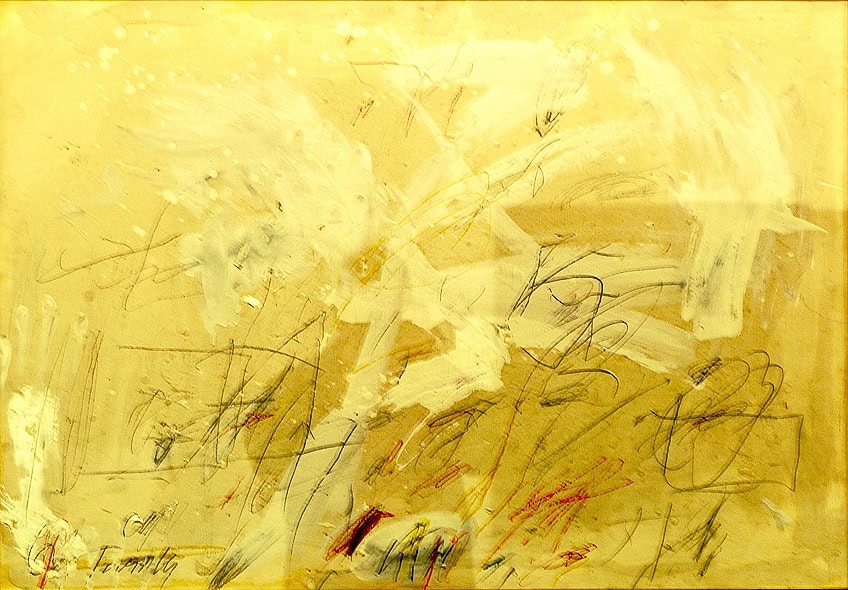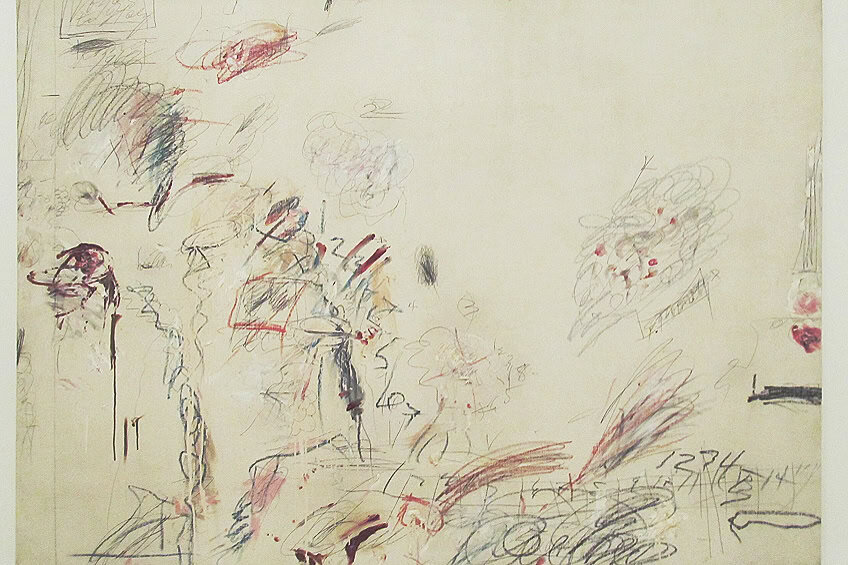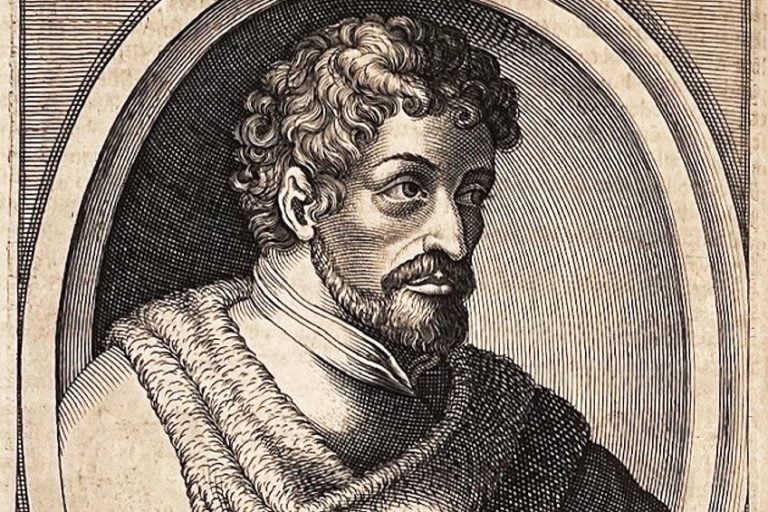Cy Twombly – Master of Abstract Expressionism
Cy Twombly, an American painter, sculptor, and photographer, is celebrated for his unique and expressive style that blends elements of Abstract Expressionism, graffiti, and classical mythology. Born in 1928, Twombly’s work is characterized by its scribbled, calligraphic lines, and layered textures, which convey a sense of spontaneity and raw emotion. His evocative canvases often incorporate poetic references and fragments of text, drawing inspiration from ancient cultures, literature, and his travels, particularly in Italy. Twombly’s ability to fuse the past with the present has cemented his place as a pivotal figure in contemporary art, challenging traditional notions of form and narrative.
Key Takeaways
- Cy Twombly is renowned for his large-scale, scribbled and graffiti-like works.
- His art draws from history, mythology, and nature, spanning several influential movements.
- Twombly’s legacy and influence reach contemporary artists globally.
Early Life and Education
| Birth | April 25, 1928 |
|---|---|
| Death | July 5, 2011 |
| Place of Birth | Lexington, Virginia, United States |
| Genre of Work | Painting, sculpture, photography, and calligraphy |
Edwin Parker “Cy” Twombly Jr. was a prominent American painter, sculptor, and photographer known for his unique artistic style. His best-known works are typically large-scale, freely-scribbled, calligraphic and graffiti-like pieces on solid fields of mostly gray, tan, or white. Born in 1928, Twombly’s creative journey took him from New York to Rome, Italy, where he found much of his inspiration. Twombly’s work is deeply influenced by both ancient and modern culture, history, mythology, and nature. He became a key figure in movements such as Abstract Expressionism and Neo-Dada.

His work often contains layers of emotional and historical references, creating a rich, textured canvas that speaks to both the past and the present. Twombly influenced many contemporary artists like Anselm Kiefer, Francesco Clemente, and Julian Schnabel. Exhibitions of his work have been held in major galleries worldwide, including the Gagosian Gallery and the Museum of Modern Art (MoMA). His legacy continues to inspire new generations of artists and art lovers alike.
Formative Years in Lexington
Cy Twombly was born on April 25, 1928, in Lexington, Virginia. His father, Cy Twombly Sr., was a former professional baseball player. Growing up in a small town, young Cy developed an early interest in art. He started formal art training at the age of fourteen under Spanish artist Pierre Daura.
This early mentorship played a critical role in shaping his artistic foundation.
Studies and Influences
After high school, Twombly attended several prestigious art institutions. He studied at the School of the Museum of Fine Arts in Boston starting in 1948. Seeking diverse influences, he moved to study at Washington and Lee University in Lexington. His education continued at Black Mountain College, where he was exposed to avant-garde ideas and prominent figures like Robert Rauschenberg. This eclectic educational background gave Twombly a robust and varied artistic vocabulary.

Mature Period
During his educational journey, Twombly’s work began to evolve. While at Black Mountain College, he developed a more experimental and abstract style. Later, at the Art Students League of New York, he engaged with the emerging New York art scene.
Twombly’s experiences and exposures during this period were foundational to his mature style, characterized by freely-scribbled, calligraphic, and graffiti-like works.
Later Period and Death
Twombly’s later period saw him move to Rome, Italy, where he continued to create and gain international recognition. He spent a significant part of his career in Europe, drawing inspiration from classical mythologies and Mediterranean culture. He died on July 5, 2011, in Rome, leaving behind a legacy as an artist who bridged American and European artistic traditions.

Artistic Style and Development
Cy Twombly’s work is characterized by its dynamic mark-making, blending influences from Abstract Expressionism, Neo-Dadaism, and Postmodernism. His paintings and drawings are notable for their integration of text, ancient mythology, and classical references into their visual language.
Accomplishments
Cy Twombly distinguished himself by creating pieces that challenged conventional notions of painting and drawing. He successfully merged elements of literature and classical myths into his art. Twombly’s influence extended beyond his contemporaries to younger artists, such as Julian Schnabel and Jean-Michel Basquiat. His work gained recognition not just in America, but internationally, leading to exhibitions in prominent museums and galleries around the world.
Twombly’s contributions have left a lasting impact on the trajectory of modern art.
Signature Visual Elements
Twombly is known for his graffiti-like scribbles and calligraphic forms. His use of large canvases allowed for expansive and expressive marks. Words often appear in his work, lending a poetic quality. His color palette frequently includes soft, muted tones such as gray and tan, which serve as a backdrop for his energetic lines and symbols. These elements create a sense of spontaneity and depth, inviting viewers to explore the narrative and emotional undertones present in his art.

Interplay of Text and Image
Twombly’s integration of text into his artwork sets him apart. He often included words, names, and references to classical myths and poetry. This interplay of text and image created a dialogue within the artwork, adding layers of meaning. The handwritten text, sometimes barely legible, evokes a personal and intimate feel.
These elements combined to bridge the gap between visual art and literature, making his work rich with historical and emotional context.
Evolution of Thematic Content
Throughout his career, Twombly’s thematic content evolved significantly. Early works show strong influences from Abstract Expressionism. As his style matured, he began to incorporate historical and mythological themes, drawing on sources from ancient history and classical mythology. Twombly’s later pieces are marked by more elaborate and layered compositions, often reflecting on themes of love, loss, and human experience. This evolution underscores his profound engagement with both art history and human emotion.

Major Works and Exhibitions
Cy Twombly’s artistic legacy is marked by his innovative paintings, intriguing sculptures, and expressive photography and drawings. His influence is evident in numerous retrospectives and global exhibitions.
Iconic Paintings and Series
Twombly is best known for his large-scale paintings featuring scribbles, calligraphic marks, and graffiti-like elements. Leda and the Swan (1962) and the Peony Blossom Paintings (2007) are standout examples. Bold brushstrokes, lines, and text fragments characterize pieces like Bacchus (2005), reflecting mythological themes. His landmark series, Fifty Days at Iliam (1978), consists of ten canvases inspired by Homer’s epic tales.
Twombly’s work often blends poetic and historical references, using a mix of color, texture, and form.
Noteworthy Sculptures
Twombly’s sculptures, though less known than his paintings, are equally impactful. He often used rough, found objects coated in white plaster, as seen in Untitled (1955), which exemplifies his tactile approach. Items like wood, wire, and paper were common materials. By the Ionian Sea (1988) reflects his fascination with the ancient world, underscoring his emphasis on simplicity and rawness. His sculptural works are part of prominent collections, like the Menil Collection. They offer a three-dimensional extension of his artistic themes.

Photography and Drawings
Twombly’s photography and drawings reveal another aspect of his creative genius. His photographs often capture poetic and ethereal qualities. Photographs 1951-2010 showcases his talent behind the camera. Drawings are integral to his oeuvre, marked by pencil sketches and pastel works. These include studies for larger canvases, often reflecting his spontaneous, gestural style.
His Untitled drawings from the 1970s show his flair for combining text and image on paper.
Retrospectives and Global Recognition
Retrospectives like the one at the Museum of Modern Art (1994 – 1995) have celebrated Twombly’s career, highlighting his diverse range of work. The MoMA exhibition included nearly 100 pieces, offering a comprehensive look at his contributions.

Twombly has been honored globally, with exhibitions at the Louvre and Tate Modern. His influence extends worldwide, impacting artists like Jean-Michel Basquiat and Julian Schnabel. Recognition from prestigious institutions underscores his enduring legacy in contemporary art.
Influence and Legacy
Cy Twombly’s work left a significant mark on contemporary art, with his contributions to postwar art, the establishment of the Cy Twombly Gallery, and his continued influence today.
Contributions to Postwar Art
Twombly emerged as a key figure in postwar art. His style, characterized by graffiti-like scribbles and calligraphic elements, revolutionized abstract art. He took inspiration from classical mythology, poetry, and history, blending these with modern artistic elements.

Artists such as Anselm Kiefer, Francesco Clemente, Julian Schnabel, and Jean-Michel Basquiat were influenced by his unique approach. Twombly’s work bridged the gap between modernism and contemporary art, making him a pioneering figure during a period of radical experimentation.
Cy Twombly Gallery and Permanent Collections
The Cy Twombly Gallery, located in Houston, Texas, showcases a vast collection of his work. It provides an intimate setting for visitors to engage deeply with his art. This gallery stands as a testament to Twombly’s lasting impact on the art world. Outside Houston, Twombly’s pieces can be found in major museums such as the Virginia Museum of Fine Arts, London’s Tate Modern, Rome’s Galleria Nazionale d’Arte Moderna, and Munich’s Museum Brandhorst.
These institutions help preserve and display Twombly’s legacy for future generations.
Legacy of Cy Twombly Today
Today, Twombly’s influence extends beyond traditional art spaces. Contemporary artists continue to draw inspiration from his methods and themes, exploring new interpretations of his scribbles and enigmatic marks. Educational institutions and art programs often include Twombly’s work in their curricula, highlighting his role in the evolution of abstract and contemporary art.

His legacy lives on not just in galleries and museums but also in the ongoing dialogue within the art community. Twombly’s unique blend of classical and modern elements continues to resonate, ensuring his place as a central figure in the history of contemporary art.
Cy Twombly’s innovative and evocative body of work has left an indelible mark on the art world, bridging the gap between abstraction and narrative. His distinctive style, characterized by gestural marks, classical references, and layered compositions, invites viewers into a dialogue between the ancient and the modern. Twombly’s art continues to inspire and provoke thought, reminding us of the profound connections between history, memory, and expression. As a master of blending the poetic with the visual, Twombly’s legacy endures, influencing contemporary artists and captivating audiences worldwide.
Frequently Asked Questions
What Influences Are Evident in Cy Twombly’s Art Style?
Cy Twombly’s art is influenced by ancient Greek, Roman, and Egyptian cultures. His travels to these regions inspired his work, which often combines calligraphic and graffiti-like scribbles on solid backgrounds. Twombly sought to bridge the past with contemporary art through these inspirations.
How Did Cy Twombly Contribute to the Field of Art?
Twombly is known for his large-scale, freely-scribbled, calligraphic pieces. His unique approach to abstract art influenced many artists such as Anselm Kiefer and Jean-Michel Basquiat. Through his paintings, sculptures, and works on paper, Twombly significantly shaped postwar American art.
What Is the Estimated Market Value of a Cy Twombly Piece?
A notable example of Twombly’s high market value is his 9-foot-tall Untitled (Bacchus 1st Version II), which is estimated to be worth between $18 million and $25 million. His works often achieve high prices at auctions, reflecting their strong demand among collectors.
How Has Cy Twombly’s Work Been Received by Critics and Art Historians?
Cy Twombly’s work has been the subject of numerous exhibitions and retrospectives. Critics and art historians often regard him as a master of abstract art. His exhibitions emphasize the emotional and thematic depth of his works, though some reviewers have found his style challenging to interpret.
Isabella studied at the University of Cape Town in South Africa and graduated with a Bachelor of Arts majoring in English Literature & Language and Psychology. Throughout her undergraduate years, she took Art History as an additional subject and absolutely loved it. Building on from her art history knowledge that began in high school, art has always been a particular area of fascination for her. From learning about artworks previously unknown to her, or sharpening her existing understanding of specific works, the ability to continue learning within this interesting sphere excites her greatly.
Her focal points of interest in art history encompass profiling specific artists and art movements, as it is these areas where she is able to really dig deep into the rich narrative of the art world. Additionally, she particularly enjoys exploring the different artistic styles of the 20th century, as well as the important impact that female artists have had on the development of art history.
Learn more about Isabella Meyer and the Art in Context Team.
Cite this Article
Isabella, Meyer, “Cy Twombly – Master of Abstract Expressionism.” Art in Context. July 12, 2024. URL: https://artincontext.org/cy-twombly/
Meyer, I. (2024, 12 July). Cy Twombly – Master of Abstract Expressionism. Art in Context. https://artincontext.org/cy-twombly/
Meyer, Isabella. “Cy Twombly – Master of Abstract Expressionism.” Art in Context, July 12, 2024. https://artincontext.org/cy-twombly/.











